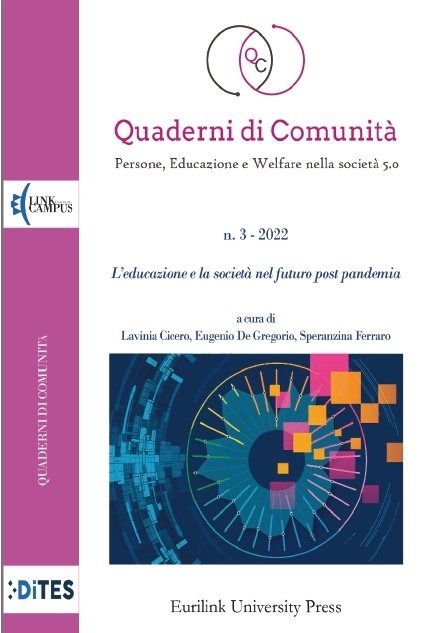Children, digital educational poverty and the pandemic. A starting point or a dead-end constraint?
DOI:
https://doi.org/10.61007/QdC.2022.3.82Keywords:
distance learning, new technologies, education poverty, pandemicAbstract
The pandemic has helped accelerate the process of digitisation of the population, regardless of age. Adults have experienced various forms of working from home, improperly called smart working, often with inappropriate devices, while children and young people have been forced to pursue their education at home, through distance learning.
In this way, thanks to digital technology, both work and education were able to continue on their path, although the pandemic forced users to use tools for which they had not acquired the necessary skills, now indispensable for both personal and professional use.
References
Floridi l. (2009) The Onlife Manifesto, Being Human in a Hyperconnected Era, SpringerOpen.
Rapporto Clusit 2020, retreived 18 agosto 2022 from https://clusit.it/pubblicazioni/.
Rapporto Clusit 2021, retreived 18 agosto 2022 https://clusit.it/pubblicazioni/.
Rapporto eseguito da NordPass retreived 18 agosto 2022 https://nordpass.com/it/most-common-passwords-list/.
Rapporto Save The Children, Riscriviamo il futuro, consultato da https://www.savethechildren.it/cosa-facciamo/campagne/riscriviamo-il-futuro.
Downloads
Published
How to Cite
Issue
Section
License
Copyright (c) 2022 Quaderni di comunità

This work is licensed under a Creative Commons Attribution-NonCommercial-NoDerivatives 4.0 International License.







